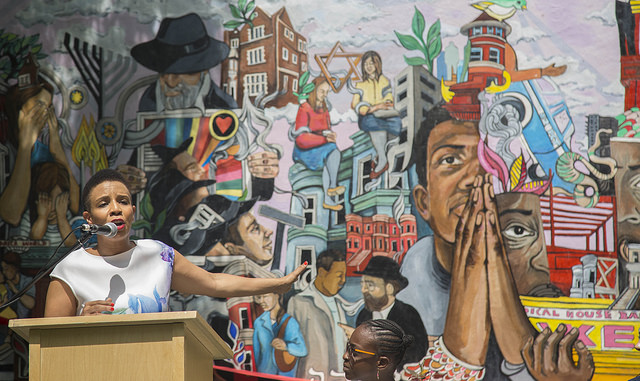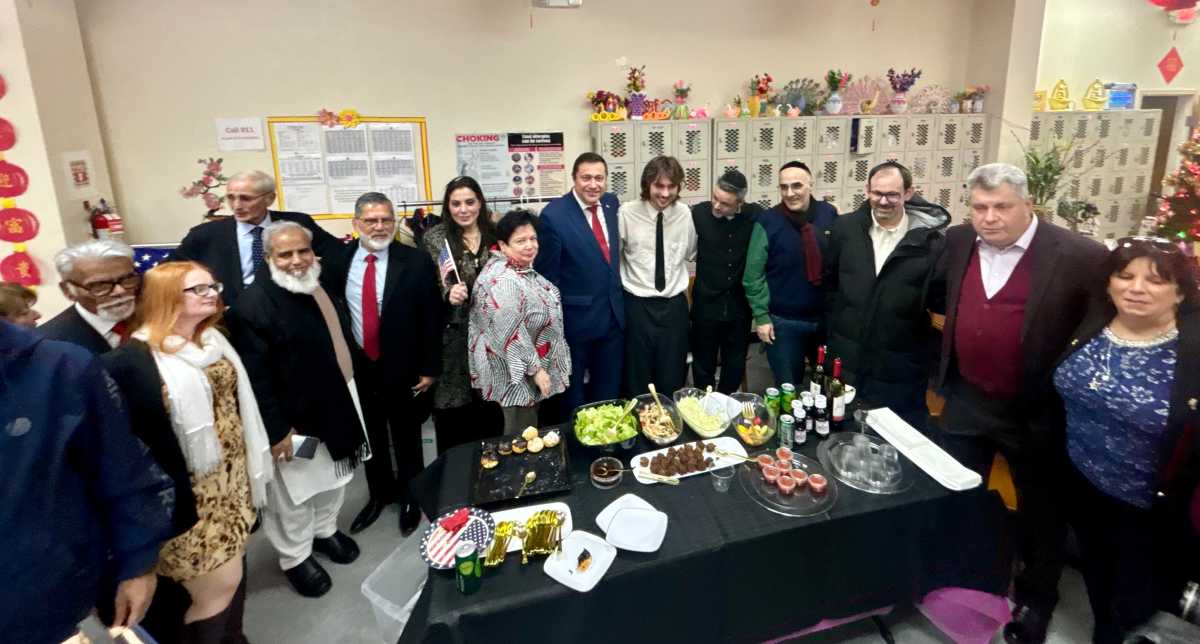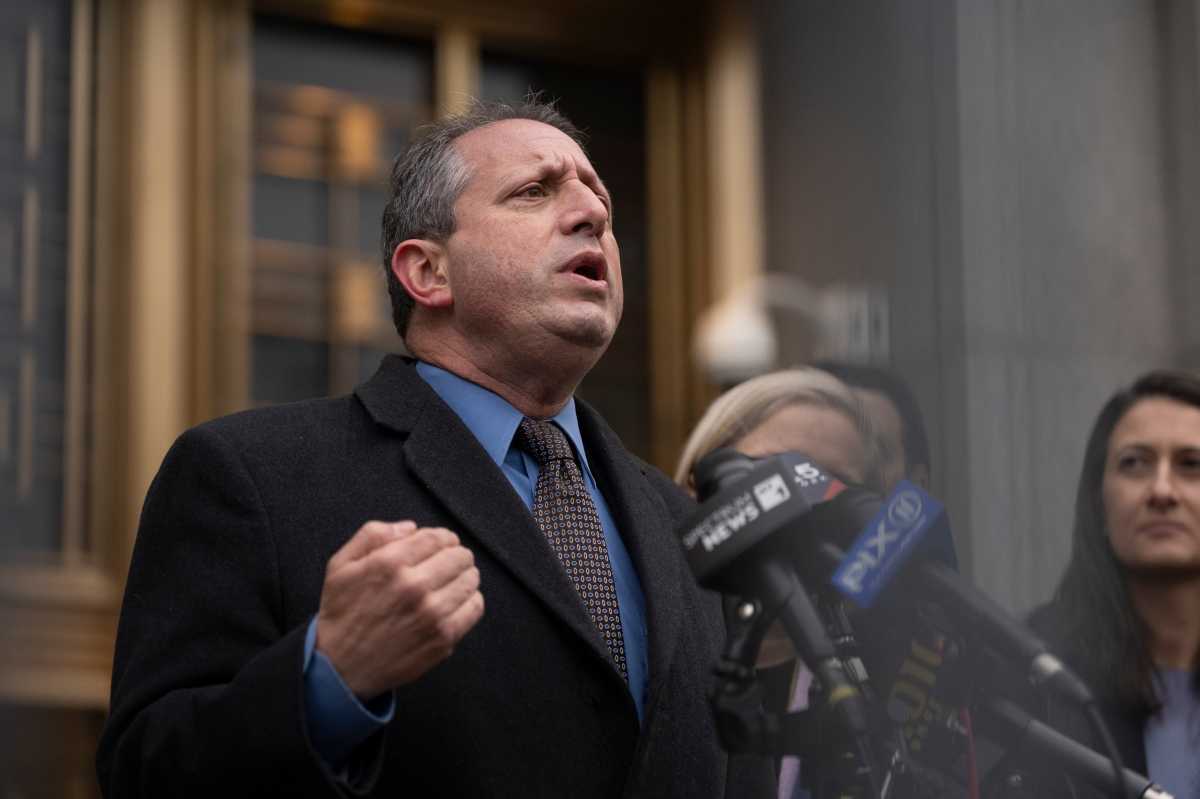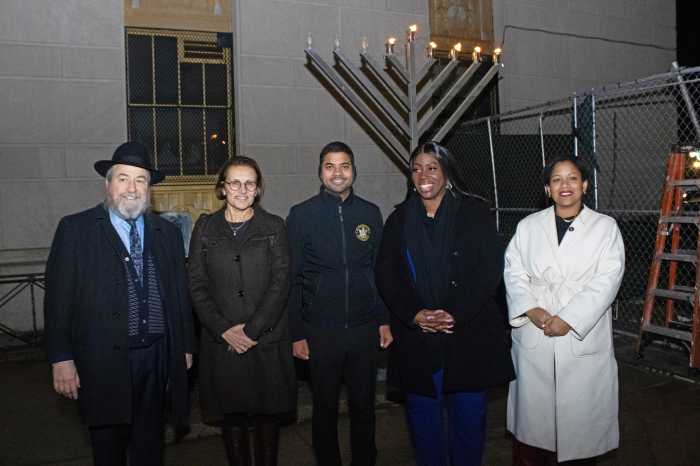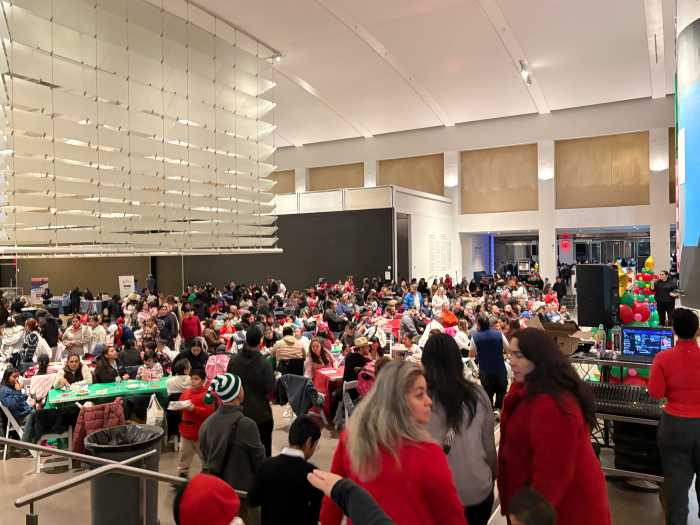In a case of art imitating life, the #OneCrownHeights mural unveiled at Brower Park in Crown Heights yesterday depicts African-American and Caribbean blacks and religious Jews working, talking and living together.
And that is how real life played out yesterday as City Councilwoman Laurie Cumbo (D-Fort Greene, Clinton Hill, Prospect Heights, Crown Heights) led a multicultural Black/Jewish march through the streets of Crown Heights to kick off her 3rd Annual One Crown Heights Festival.
The march started out from in front of the Jewish Children’s Museum on Kingston Avenue and Eastern Parkway in the heart of the predominant Lubavitch Hasidic Jewish neighborhood to the mural behind the Brooklyn Children’s Museum in Brower Park – a predominately American and Caribbean black neighborhood. It concluded with a celebration in the park of the two cultures featuring food, music, activities and tables from various elected officials and social service organizations.

“It’s important to work towards bringing people together as often as we can and as frequently as we can. I found that since I was a council member we were being brought together all too often in times of tragedy and I wanted us to bring us together in times of community and family gathering,” said Cumbo.
“I think that building community is a every day process, and every day working towards making something better without ever maybe getting to be ideal, but at least get to a place where your working towards an ideal. So just the act of doing is important and critical,” she added.
The mural was made through the non-profit organization, Groundswell NYC, which brings together artists, youth, and community organizations to use art as a tool for social change.
“This was done by students who wanted to create their vision of one Crown Heights. What that would look like, and great art always does just that. It brings about questions. It brings about our feelings. It brings about hopefully a great conversation,” said Cumbo. “My hope in creating this mural and organizing this event is in bringing this community together in a way that’s unprecedented.”
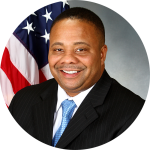
Other elected officials that represent the neighborhood who participated included State Sen. Jesse Hamilton, U.S. Rep. Yvette Clarke, Lt. Gov. Kathy Hochul and Democratic District Leader Geoffrey Davis.
Hamilton noted how far the community has come since the 1991 three-day racial riot that turned black residents and Orthodox Jewish residents against each other. He noted how as a school board president he as well as Davis, community activist Richard Green and NY1 Anchorman Errol Louis (all who were in attendance) each contributed along with a number of Orthodox Jews to building a stronger bond between blacks and Jews.
“People started learning about each other and being more compassionate and understanding, and everybody understood we had to work together. To co-exist. So now it [Crown Heights] is one of the safest neighborhoods in Brooklyn and the place to be,” said Hamilton, adding he often goes to Shuls [Jewish synagogues] and realizes the two communities want the same things.
“We all want safe streets and a quality education and affordable homes,” said Hamilton.
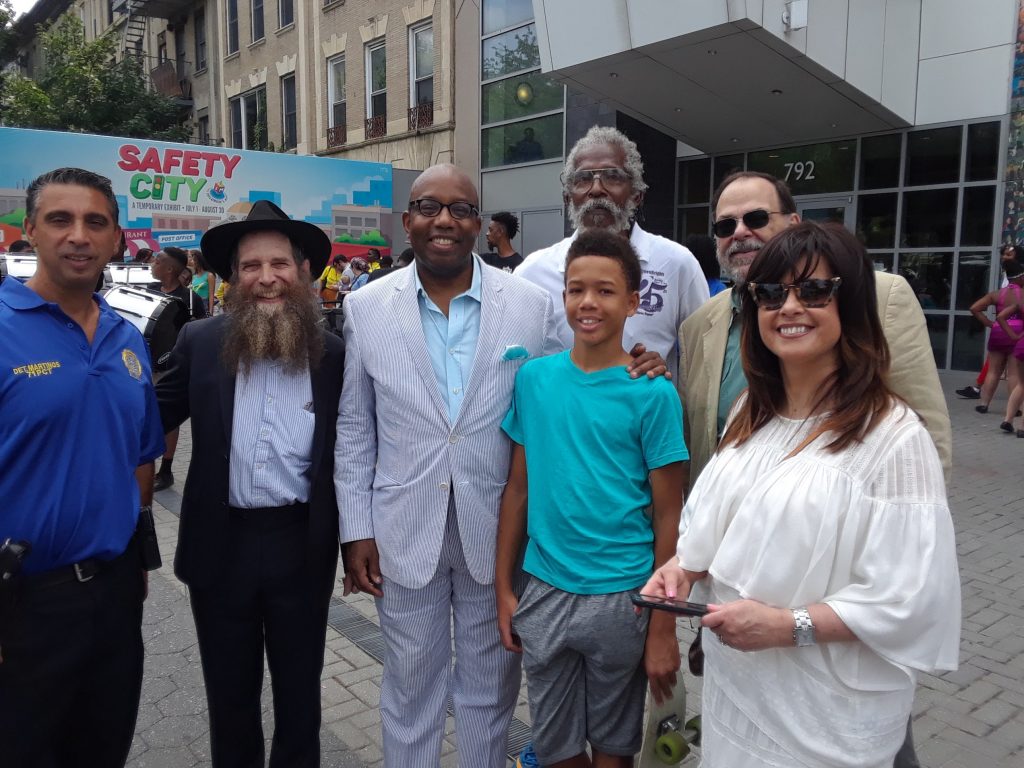
Louis, who has lived in the neighborhood since 1985, said it is important that the community attends such events that brings everybody together.
“I’ve seen it really really divided, tense and even dangerous around here and the only thing that provides long-term safety is to take the time on a Sunday come out here, and I take my son out to all of these events, you shake hands, you say hi to people and make sure everything’s okay. We can control rumors if something bad can happen, and that we know and appreciate and share this community together. It’s very important. It’s a fundamental part of public safety,” said Louis.
To Cumbo, though, the most important part of the event is to ensure the community gets built from the ground up starting with the children.
“That’s why we partnered with the Jewish Children’s Museum as well as the Brooklyn Children’s Museum, because we want this to be a children’s festival. That way in 20, 30 40 years from now our young people will know one another, and be able to celebrate their different culture and different heritage,” said Cumbo.


